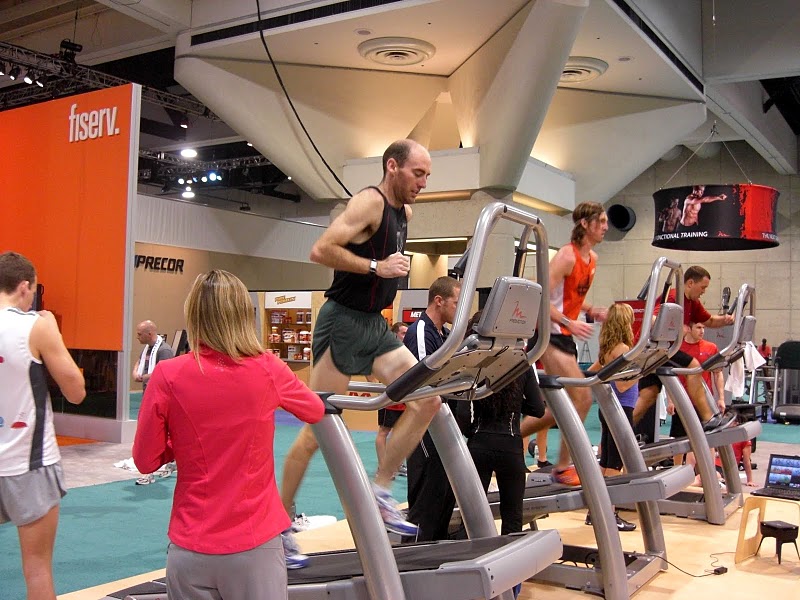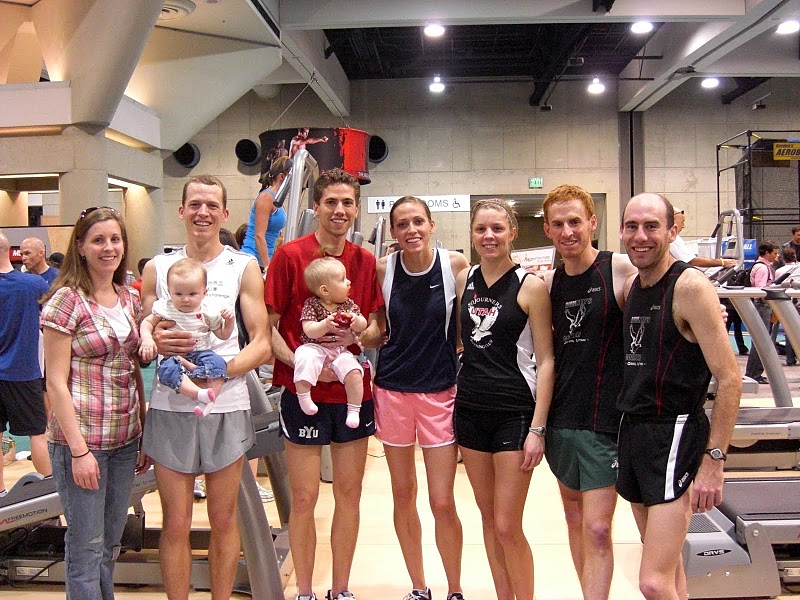

Social Psychologist & Personal Advisor
Dr Matt's Myth Busting!

Complimentary Consultation
When you buy Changing Your Stripes
Running a Marathon with Minimal Training.
.by Matt Moody, Ph.D..
It's a Myth that a person "has to" do a lot of long distance training to complete (survive) a 26.2 Marathon. In other words, if you have a healthy base of running 5K and 10K road races, you can complete a 26.2 Mile Marathon by applying a few basic strategies pertaining to energy supply, hydration, and pacing. Here's how you do it:
Energy Sources: Keeping Fuel in the Tank. Any time you run for more than a hour, GU will benefit your performance: it replaces lost carbohydrates and electrolytes so your body can continue to work efficiently throughout a race. You don't have to use "GU" per se, just any source of carbohydrate and electrolyte replacement.
At a 8 minute mile pace, a Marathon distance is covered in about 3 - 1/2 hours; and at a 9 minute mile pace, the distance is completed in close to 4 hours. At a moderate jogging pace, a runner burns 800 calories a hour. In a 4 hour time span, an average runner will burn 3200 calories. This is not a big concern if you've done a lot of distance training, and your body is used to burning fat.
The average runner who has not done a lot of distance training will HIT THE WALL, if he/she does NOT replenish energy sources during a race. Ever since GU and other energy gels and drinks have been used in distance running "HITTING THE WALL" is mostly a thing of the past.
Here's the GU Routine for a Marathon: Consume GU 15 minutes before the race begins, then 45 minutes into the race, again at 1 hr 30 min, and every 45 minute intervals thereafter, for as long as you are on the course. Instead of consuming GU 15 minutes before the start of a Marathon, you could eat an energy bar or anything else that supplies Carbs, Calories, and Electrolytes. Here are the Nutritional Facts on GU.
Many race events supply GU at water/aid stations. But I've been in races where organizers have RUN OUT OF GU, so it's best to have a few packets in your pants. Each packet of GU supplies 100 calories of carbohydrates and glucose (sugar), as well as electrolytes: Calcium, Chloride, Potassium, Magnesium, and Sodium.
Obviously, it's not practical to carry a water bottle with you during a race; and that's why GU works well. You can easily carry a couple of GU packets on you. You may need to buy some running shorts that have pockets with Velcro flaps.
GU is easy to squirt into your mouth while running. Some people eat gummy worms: Which could work if you eat them while walking through water stops. A serious runner would NOT eat a gummy worm during a race — too much chewing.
Whatever you choose to consume during the race for Carbohydrate and Electrolyte Replacement, you need to experiment with products during your training runs; this way you know which products work for your body.
Hydration. While running, the body absorbs about 8 oz of water every 20 minutes; in an hours time, runners need to drink about 24 oz. of water to stay hydrated. You should drink your first 8 oz. BEFORE the race begins, and then 8 oz. more every 20 minutes thereafter.
Many Marathons have water stations every 2.5 miles. At a 9 minute mile pace, you will pass 2 water stations in the first hour of running. So drinking at least 8 oz. of water or Gatorade (ERG - Electrolyte Replacement & Glucose) per station will keep you hydrated. Some runners make the mistake of NOT taking in adequate water early in a race (because they don't feel thirsty) — this is a BIG Mistake! You've got to guzzle the prescribed amount of water whether you feel like it or not. Towards the final miles of a Marathon, you'll be glad you did.
Pacing. Here's the NUMBER #1 Strategy that will enable an average runner, who has NOT done a lot of distance training, to complete (survive) a 26.2 Mile Marathon: WALK through every water station! Even take a time to stretch your leg muscles. If you haven't done sufficient distance training, then a fast TIME should not be your motive for a Marathon — it should be survival with minimal pain.
Using this Walk-Run Approach, you should be able to cover twice the distance of your longest continual training run, BEFORE Lactic Acid tells your muscles to quit moving. It is recommended that you have at least run a few half Marathon distances in preparation for the Big Daddy Distance of 26.2 Miles.
As you RELAX your running muscles by slowing down and walking through water stations, you will DELAY the onset of Lactic Acid build up in your leg muscles. Lactic Acid build-up will eventually stiffens your running muscles, making it hard to move — this is the body's natural defense mechanism, so you can't injure yourself through over-exertion.
Speaking of Over-Exertion
Here's my oldest son Danny running in the Mount Everest Challenge in Los Angeles, sponsored by the Pro-Form Treadmill Company.

Danny's Team of 3 Guys and 2 Girls ran a relay race UP MOUNT EVEREST -- simulated by a Treadmill at a 30% incline. It took 6 hours for the team from UTAH to win 1st Place and $10,000.
The winning strategy was this: Running 800 meter intervals X 5 team members, 6 hours straight -- which meant running an 800 meter pace, 2-1/2 minutes per turn. This allowed 10 minutes of recovery time before each team mate did it again: 150 X 800 meter intervals in 6 hours, 30 X 800m intervals per team mate.
If the treadmill was flat, the team would have covered about 75 miles (15 miles per runner), but running up MOUNT EVEREST (Treadmill inclined at 30%), the Team covered about 40 miles up hill.

Here's the team of 5 (wearing sleeveless singlets) + plus 2 spectating spouses & babies
Wife, Seth , Husband, Tawny, Amelia, Mike, and Danny
On the theme of scaling mountains, Danny has posted pictures of a run/hike up Mount Timpanogos at facebook: Steep Drop — Top of Timp — Utah Lake from Timp — Hiking the Back Side — Rocky Trail — Green Meadow — East Side Near Top — Wild Goats — Emerald Lake — Jumping in Emerald Lake.
:o)
DrMatt
* * * * * * *
The Journey
For this is the Journey that men make:.
To find themselves. If they fail in this, it matters little
whatever else they may achieve: Money, Fame, Revenge.
When they end the Journey, they can put them all into
a bin marked “ashes.” They mean nothing.
But if one has found that he has within him
a divine soul, if he has discovered the principles
upon which the fulfillment of that soul is based, and
if he implements those principles, then he has a mansion
within which he can live with dignity
and joy each day of his life.
(Changing Your Stripes, 2nd Edition, page 1).
Dr. Matt offers telephone counseling that will teach you
the principles upon which the fulfillment of your soul is based.
The Greatest Prize
for Life's labors isn't
in material possessions
or impressive accomplishments,
but in the progress of personal character.
You labor for your own becoming, this is your richest reward.
Who You Become is your greatest possession,
make it your Masterpiece!
(Changing Your Stripes, 2nd Edition, page 274).
The book, "Changing Your Stripes" presents principles for getting out of
the ditch in which you've been dumped (the difficulties of which you are a victim), and
the ditch in which you've jumped (the difficulties for which you volunteer).
"Mastering a challenging situation
is ultimately a matter of
mastering yourself!"
- Matt Moody
"Changing Your Stripes," teaches you the principles that lead to lasting change,
making you a new kind of creature capable of communicating
with calm, even as storms of contention swirl.
If these principles resonate and ring true,
then . . . this book is for you!

Sold Exclusively
through this website
Changing Your Stripes is a
unique reference book that will help
you understand, . . . and solve all of
Life's ever-appearing problems.
Here are more reasons to buy
Changing Your Stripes

Social Psychologist & Personal Advisor
